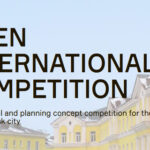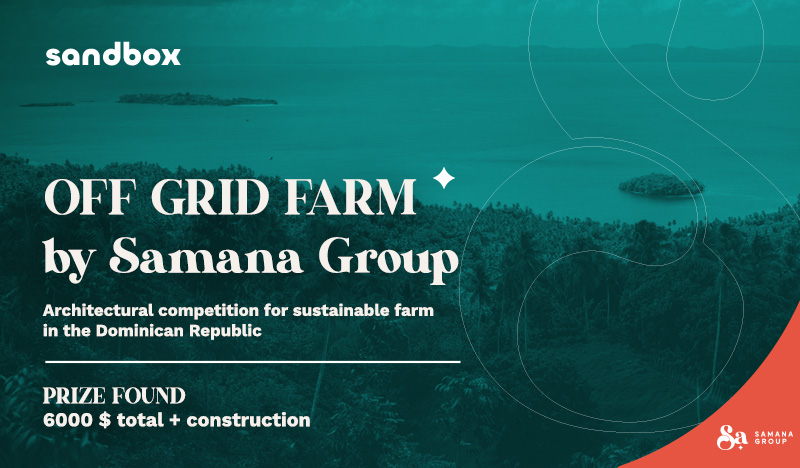Submission: December 16, 2018
Registration: December 16, 2018
Language: English
Location: Washington D.C., USA
Prizes: Please see details below
Type: Idea Competition
Cities should be built and evolve for the people that live within them, but who the people are is often debated, forgotten, or misunderstood. This year, the AIA|DC Urban Design Committee has sought a better understanding how architecture and urban design contribute to spatial equity within cities.
Spatial equity strives to give equal opportunity to the community inhabiting the space. The collaboration between the designer and developer aims to be inclusive of the community ethos and aspiration, creating a culture of place that measures human values. Thus this competition strives to elicit new ideas for the places in which we, the people, live and how we can continue to achieve more spatial equity.
PROMPT
Thresholds, boundaries, and borders define the edges of our everyday life. Borders of all scales, visible and invisible, establish relationships between the built environment and surrounding communities. Borders influence how we identify ourselves, relate to others, utilize available resources, and form communities. They are the physical and symbolic embodiment of our choices and are an indicator of how equity is distributed. These borders can clarify and define spaces and relationships — making the world around us easier to navigate and understand.
Borders also have the ability to restrict the sharing of resources. This typically results in the detriment of one party and perpetuates further inequity. These inequities are manifested in different scales, such as slums, public housing, refugee camps, and war zones.They also can translate into infrastructural systems affecting mobility and education. The lack of access to green spaces, food deserts, empty buildings, vacant lots, and congested streets are just a few of the physical manifestations of inequity.
Borders, according to Jane Jacobs, “exert an influence (sucking) the life out of our cities and its neighborhoods. Not just literal walls and barriers, many features of urban life — from roads to parks to buildings — can cut off activities in public spaces and create what’s called a border vacuum.” In contrast, Kevin Lynch argues that boundaries can fuse communities together: “an edge may be more than simply a dominant barrier if some visual or motion penetration is allowed through it — if it is […] structured to some depth with the regions on either side. It then becomes a seam rather than a barrier, a line of exchange along which two areas are sewn together.” If borders are instead viewed as a means of stitching disparate entities together or facilitating connections and transactions, they have the potential to be flexible, permeable, and inclusive.
In 1995 seven european countries opened their borders to each other for their citizens to cross without IDs. This group, known as the Schengen Zone, was later joined by 19 countries, the dissolution of these state borders brought a large part of europe together. It resulted in easier cross-border commutes to work, the ability to shop in other countries, and vacations unencumbered by tedious passport hassles. However, the recent refugee crisis and rise of nationalistic parties have led to some border controls being re-established. The Schengen Zone is being questioned and the future of european borders is unclear. There are numerous countries that are re-evaluating their own positions with regard to trade, immigration, and refugees.
In addition to the state/county, and other jurisdictional lines that divide a nation, there are border conditions that are translated through the complex networks of infrastructural systems, transportation networks, agricultural production, labor forces/unions, telecommunications, energy production, and more. Behind these industries lie numerous organizing institutes and stakeholders. These complex network often suffer in their efficiency due to political borders, and are critical for the existence of an autonomous state. Is it possible to reimagine how borders impact autonomy? At the neighborhood level we often come across edges that restrict movement, manifested either in physical signs or integrated within us through socio-cultural systems. The relationship between buildings, streets/buildings, plaza/street/buildings, offers spaces for opportunity that redefines the segregation to integration. Cohesion and collectivism can transform the points of conflicts to points of growth.
CHALLENGE
How can design as a medium leverage and transform borders to unify spaces while at the same time maintaining identity, diversity, security, and sense of place?
How does the design process vary and how can it be reimagined with respect to borders, at multiple scales, and what impacts would this have on the community at large?
When do borders contribute to spatial equity and when do they harm these pursuits? How can design reinforce or weaken these affects, respectively?
You are asked to propose design solutions to enhance spatial equity along a border(s). A successful proposal should seek to demonstrate the relationship between multiple scales that are formed by border conditions: the resultant urban conditions of this systematic relationships, the individuals who are impacted by this urban condition, and the stakeholders who may manage or influence how these systems operate.








